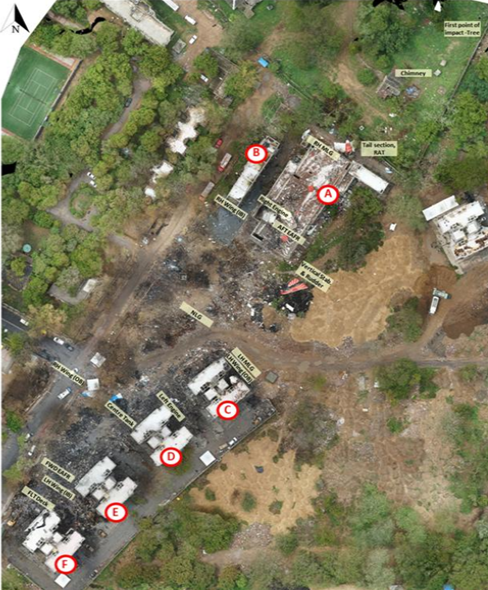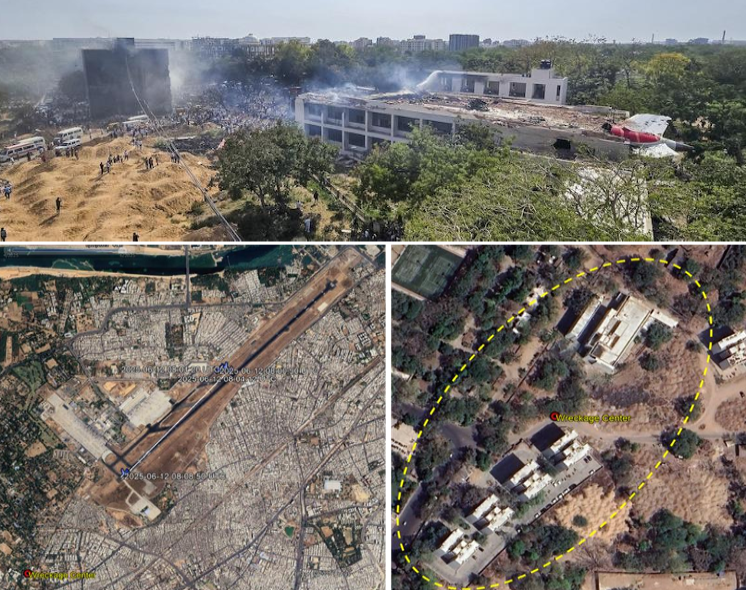Just seconds after lifting off the runway, a routine departure from Ahmedabad turned into a desperate struggle for survival for those onboard Air India flight 171. The cockpit voice recorder captured a chilling exchange that lies at the heart of the investigation into the crash.
The Boeing 787-8 Dreamliner, registration VT-ANB, had just achieved an airspeed of 180 knots on June 12, 2025, when the unthinkable happened. The fuel supply to both of the massive GEnx engines was suddenly cut off. The engine power began to decay rapidly, and the aircraft, laden with 230 passengers and 12 crew members, started to lose its fight against gravity.
In the cockpit, confusion and disbelief reigned. The Pilot Monitoring, an experienced captain with over 15,000 flight hours, was the first to break the silence.
“Why did you cut it off?” he asked his co-pilot, the Pilot Flying.
The co-pilot’s response was immediate and equally bewildered: “I did not do so.”
This perplexing exchange, captured by the Enhanced Airborne Flight Recorder (EAFR), is the central mystery in the tragic story of AI171. Within seconds, the pilots attempted a desperate restart of the engines. As the aircraft lost altitude, the Ram Air Turbine (RAT) automatically deployed, a last-ditch effort to provide emergency hydraulic power. A frantic “MAYDAY MAYDAY MAYDAY” call was transmitted, but it was too late. The aircraft crashed just outside the airport boundary, a mere 34 seconds after the engines fell silent.
The day began like any other. The crew for flight AI171, bound for London’s Gatwick Airport, arrived at Sardar Vallabhbhai Patel International Airport in Ahmedabad, passed their pre-flight checks, and prepared for the long-haul journey. The aircraft, a 12-year-old Boeing 787-8, had arrived from Delhi earlier that day. A minor technical issue with a stabilizer position sensor had been reported by the previous crew, but maintenance engineers had addressed it, and the aircraft was cleared for service.
With 54,200 kgs of fuel on board, the aircraft was well within its weight limits. At 08:07 UTC, the pilots received clearance for takeoff from Runway 23. The aircraft accelerated normally, reaching its decision and rotation speeds on schedule. At 08:08:39 UTC, it lifted off the ground. Everything seemed perfect.
But just three seconds later, the flight data shows the fuel cutoff switches for both engines moved from the “RUN” to the “CUTOFF” position, one after the other, with a one-second gap. The engines, starved of fuel, began to shut down.
The aircraft, now a glider, began to descend. It struck trees and a chimney before impacting the BJ Medical College hostel, located just 0.9 nautical miles from the end of the runway. The impact was catastrophic. The aircraft disintegrated, with wreckage strewn over an area of 1000 by 400 feet. The main fuselage continued to fragment as it collided with several buildings, causing extensive structural damage and a massive fire.
Tragically, all 12 crew members and 229 of the 230 passengers lost their lives. Nineteen people on the ground were also killed. One passenger miraculously survived the initial impact, though with serious injuries.

Investigation into the accident continues
An investigation was immediately launched by India’s Aircraft Accident Investigation Bureau (AAIB). Teams from the US National Transportation Safety Board (NTSB), Boeing, and engine manufacturer General Electric (GE) were also brought in to assist.
The flight recorders, the so-called “black boxes,” were recovered from the wreckage. The forward EAFR, which contained the crucial cockpit voice and flight data, was found to be in good condition despite the fire. The data was successfully downloaded, providing investigators with a second-by-second account of the flight’s final moments.

The preliminary findings from the report have ruled out several potential causes:
- Weather: The weather at the time of the accident was clear, with good visibility and light winds.
- Engine Failure: The data shows the engines were operating normally until the fuel was cut off. The subsequent attempt to relight the engines showed that Engine 1 was beginning to recover, while Engine 2 was struggling but still attempting to restart.
- Fuel Contamination: Fuel samples taken from the airport’s supply were found to be satisfactory.
The investigation is now focused on the fuel control switches. The report notes that the FAA had previously issued a Special Airworthiness Information Bulletin (SAIB) regarding a potential issue with the locking feature of these switches on some Boeing models, including the 787. However, this bulletin was advisory, not mandatory, and the suggested inspections had not been carried out on this particular aircraft.
While the thrust levers were found in the idle position in the wreckage, the flight data confirms they were in the takeoff thrust position until the moment of impact. The fuel control switches themselves were found in the “RUN” position, which is consistent with the pilots’ attempts to restart the engines.
The mystery of why the switches moved to the “CUTOFF” position remains unsolved. The investigation will continue to analyze the wreckage, interview the surviving passenger, and delve deeper into the aircraft’s maintenance history to find the answer. The final report will hopefully provide closure to the families of the victims and crucial safety lessons for the aviation industry worldwide.
